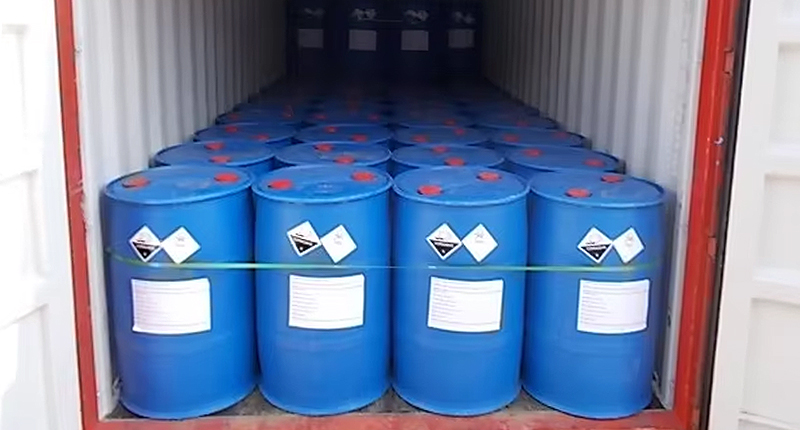Analysis of the whole process of oil fracturing: from preparation to completion of construction
Fracturing is a technique that uses hydraulic action to create cracks in the formation. The process involves using fracturing trucks to inject high-pressure, high-volume viscous fluids into the formation to create numerous fractures. These fractures are then filled with proppant, such as quartz sand, to increase the permeability of the formation and improve the efficiency of injection and production.
Commonly used fracturing fluids include water-based fracturing fluids, oil-based fracturing fluids, emulsion fracturing fluids, foam fracturing fluids and acid-based fracturing fluids. The construction process of fracturing site covers many links, such as pre-pressure preparation, pre-pressure operation, fracturing construction and post-pressure operation.
In the pre-pressure preparation stage, it is necessary to ensure that the performance of various fracturing equipment is good, meet the construction design requirements, and equipped with complete metering instruments, and check whether the high pressure manifold and fracturing wellhead devices are qualified. In addition, it is necessary to prepare sufficient fracturing raw materials, such as fracturing fluid, proppant, etc., and arrange the fracturing string according to the design requirements.
The next step is the pre-pressure operation, including the original well string, sand exploration surface and sand washing, well kill replacement injection and fracturing interval pretreatment. These operations are critical to ensuring the safety and success of fracturing operations.
Once these preparations are completed, the fracturing phase begins, where high-pressure, high-volume viscous fluids are injected into the formation to effectively fracture numerous fractures. These fractures are then filled with proppant to further enhance the permeability of the formation and increase the efficiency of injection and production.
According to the requirements of fracturing construction design, the required pretreatment fluid is prepared in advance. If it is necessary to discharge liquid, equipment for recycling waste liquid should be equipped to ensure that the discharged waste liquid is properly disposed of to avoid environmental pollution.
The next step is to run the frac string. The special frac string must be run into the well and its bearing capacity must meet the design requirements.
After completing the above preparatory work, you can enter the fracturing construction phase. This process includes several operations such as circulation, pressure test, squeeze test, fracturing, sand addition, squeeze replacement, shut-in diffusion pressure and active string.
In the cycle process, the fracturing truck is started one by one and water is used as the circulating fluid to circulate the surface fracturing process line. The wellhead valve should be closed before circulation to prevent impurities from surface lines from entering the frac string and contaminating the reservoir or causing engineering accidents.
The pressure test process is to test the pressure resistance of the equipment above the wellhead valve and the surface fracturing process line. In this step, it is necessary to slowly and steadily start the high-pressure pump of the fracturing truck, and carry out high-pressure tests on the equipment and pipelines. The test pressure is 5 times the predicted pump pressure. After the pressure is stabilized for 5 minutes, if the pressure parts have no leakage and the pressure does not drop, it is considered qualified.
The purpose of the squeeze test is to check the condition of the downhole string and downhole tools, and to assess the water absorption capacity of the zone to be fractured. After the normal test extrusion, it is necessary to start the fracturing truck one by one to squeeze the pre-fluid into the well with high pressure and large displacement to promote the formation of fractures in the fractured zone and extend forward. Whether the fracture is formed can be judged by the fracturing construction curve.
When the reservoir fracture is formed and the pumping pressure and flow rate are stable, the sand can be added. In the process of sand addition, it is necessary to strictly control the sand mixing ratio according to the requirements of fracturing construction, maintain the continuity and smoothness of sand addition, and ensure the good performance of fracturing equipment.
After the sand is added, it is necessary to carry out the extrusion process. At this time, the displacement bypass process of the sand mixer should be opened, the displacement fluid should be injected into the well, and the sand carrying fluid should be extruded into the reservoir fracture.
The last step is to close the well and diffuse the pressure. After the fracturing operation is completed, all inlet and outlet gates at the wellhead should be closed, and the fracturing fluid should be broken, filtered, and the fracture closed. During this process, it is necessary to prevent the proppant from returning to the fracture with the high-viscosity liquid to ensure the sand concentration at the fracture mouth. If the fast breaking fracturing fluid is used, the small nozzle can be used to discharge the injection after the breaking of the glue.
Movable string.
In the process of moving the string, it is necessary to ensure that the load does not exceed 250KN of string suspension in the well, the lifting speed is controlled within 5m/min, and continue to move for at least 5m until the string suspension shown by the tension meter returns to the normal level.


